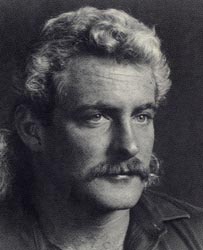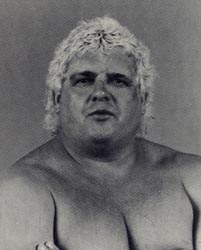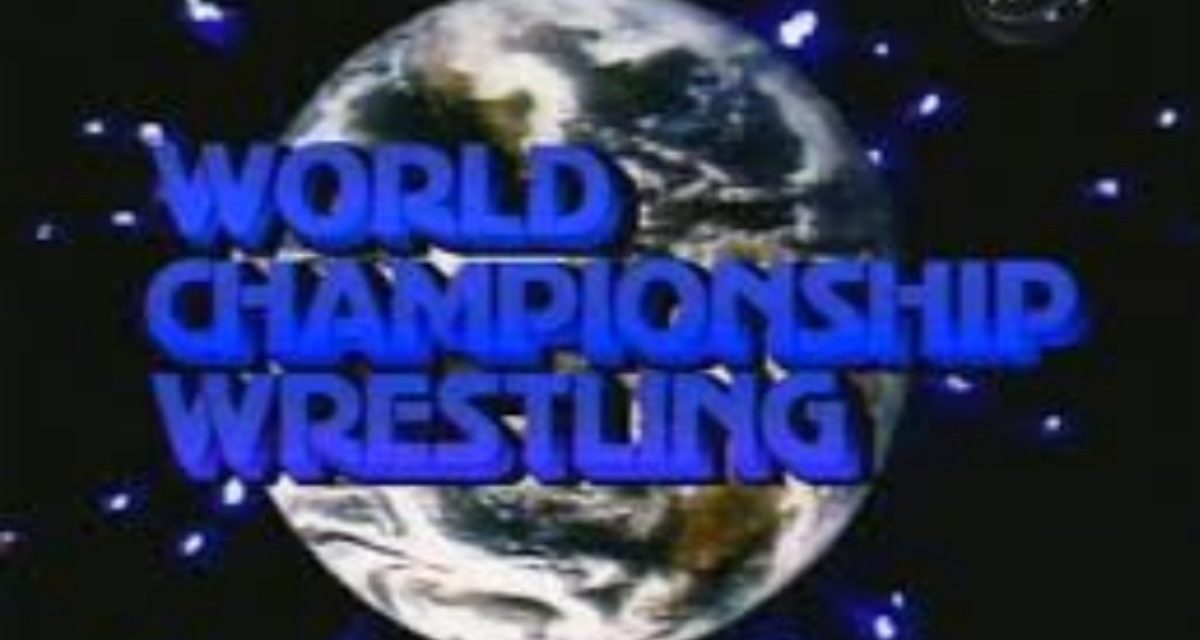When Turner Broadcasting CEO Jamie Kellner cancelled WCW programming on TBS, it spelt the end for WCW as a whole. As he watched WCW Thunder on March 21st 2001, the last wrestling program to air on TBS, John Molinaro couldn’t help but reflect on the significance of such a loss. After all, wrestling had been a staple on TBS since 1972. In this second of a three part series, John Molinaro looks back at the Jim Crockett and WCW years of wrestling on TBS.
“World Championship Wrestling”, hosted by Tony Schiavone and David Crockett, aired in the traditional Saturday 6 – 8 PM timeslot. Taped in the very same TBS studios as “Georgia Championship Wrestling”, it continued the tradition of wrestling on TBS that started in 1972.When Vince McMahon sold his TBS time slots to Jim Crockett Jr. in April of 1985, a new era of wrestling was born on the SuperStation.
Stars like Ric Flair, Dusty Rhodes, Magnum T.A., the Koloffs, The Midnight Express and Jim Cornette, the Rock ‘n’ Roll Express, Ronnie Garvin and the Four Horsemen became synonymous with TBS.
With a timeslot on TBS, Jim Crockett Promotions, up until then a regional promotion based out of the Mid Atlantic region of the U.S., now had the cable exposure and the depth in roster talent to tour nationwide and challenge McMahon and the WWF on the national stage. Jim Crockett Promotions started to expand outside its Mid Atlantic base and started running in new markets all over the country. Cities like Philadelphia, Baltimore, Chicago and Miami became strongholds of the NWA. As 1985 progressed, the wrestling war between McMahon and Crockett heated up with both sides fighting for wrestling supremacy in 1986.

Magnum T.A.
Crockett used the TBS exposure to his full advantage. In late 1985, he promoted a weekly Championship Series for the Saturday show. Featuring main event matches usually reserved for house shows (remember this was still the days of nothing but squash matches on TV), the series culminated on December 28, 1985 when Ric Flair defended his NWA World title against challenger Ronnie Garvin. At over 18 minutes in length and featuring some legitimately stiff chops and exchanges, the Flair-Garvin tussle stands as one of the most physical and memorable matches in TBS history. The match not only set up Garvin as a contender for Flair’s title for the following two years, but also firmly cemented Crockett Promotion’s presence on the SuperStation.
As a precursor of things to come, TBS presented “Superstars on the SuperStation”, a taped wrestling special featuring Crockett’s stars airing in primetime on February 7, 1986. The special featured marquee matches taped from Crockett’s house shows from around the country and packaged in a unique format.
In April of 1986, the first annual Jim Crockett Sr. Memorial Tag Team tournament was held at the New Orleans Superdome. A two-day event that featured the best tag teams from around the NWA, the Crockett Cup was a huge commercial success, mostly due to the fact that Crockett was able to promote the card nationally on TBS.
In 1985, Crockett held The Great American Bash, a single night extravaganza that drew over 30,000 fans to the Municipal Stadium in Charlotte, NC. In 1986, as the summer quickly approached, Crockett and booker Dusty Rhodes decided to use the TBS timeslots to their fullest advantage and promoted an entire Great American Bash tour.
With the national exposure that TBS granted him, Crockett was able to promote his Great American Bash tour in cities all across the country. Capacity crowds at arenas and stadiums in cities such as Philadelphia, Washington D.C., Baltimore, Tampa Bay, Dallas and Kansas City turned out to see the stars of Jim Crockett Promotions. As a result of the national forum that TBS granted him, Jim Crockett had his most successful years of business between 1985-86.
The wrestling wars heated up in 1987 as the battle was about to be taken to another level: pay-per-view. Seeing the success that McMahon had with it, Crockett and Rhodes decided that they would have to get into it as well. They laid out a game plan and decided that their marquee event of the year, Thanksgiving’s Starrcade, would be promoted on pay-per-view. As this was the company’s first venture into the pay-per-view market, TBS became an invaluable resource for promoting it.
Mid year, Crockett and Rhodes decided to go with Ric Flair vs. Ronnie Garvin as the main event at Starrcade. The on-going feud between Flair and Ron Garvin picked up in a series of matches and angles airing on TBS, culminating in Garvin winning the title from Flair on September 25th in Detroit.
In the weeks preceding Starrcade, an irate Flair cut a series of classic promos on “World Championship Wrestling” wanting revenge on Garvin for “stealing” his title. Another round of angles and interviews on the SuperStation built towards Starrcade, where Flair regained the title in a steel cage match.
While certainly a success in terms of wresting quality, Starrcade was a financial flop. McMahon and the WWF upped the ante in the wrestling war, running head to head against Crockett on pay-per-view with its inaugural Survivor Series card. Although built on TBS for the previous three months, Starrcade just couldn’t compete against Survivor Series and the enterprising McMahon.
Reeling from the bloodbath he took on Thanksgiving night, Crockett refocused his efforts on TBS. Deciding to play the same game as McMahon, Crockett presented the first ever “Clash of the Champions” special on TBS on March 27, 1988. Going head to head with WrestleMania IV, “The Clash” garnered a 5.8 rating on the SuperStation, and took a big bite out of the WWF.
With WrestleMania’s hefty price tag and the fact that Crockett’s show was being broadcast for free on TBS, more people watched the “The Clash” that afternoon than WrestleMania.
And what a show it was. Using the national forum granted them, Crockett decided to help create a new superstar for his fledging company as NWA World Champion Ric Flair went to a 45-minute draw with a youngster by the name of Sting. The match helped to elevate Sting, a former mid-carder in the UWF, and made him into a star overnight.
So successful was the experiment that TBS granted Crockett three more prime time slots for 1988 to run “Clash of the Champions” specials. “Miami Mayhem” on June 8, setting up the promotion’s Great American Bash pay-per-view the following month, featured NWA World Tag Team champs Tully Blanchard and Arn Anderson going to a double DQ against Sting and Dusty Rhodes; September’s “Fall Brawl” special from Albany, GA saw Sting defeat U.S. Champion Barry Windham in the main event and December’s “Season’s Beatings” card from Chattanooga, TN saw Ric Flair team up with Windham to defeat the Midnight Express.
The four Clashes garnered an average 5.1 rating between them, making the ‘Clash’ a regular feature on TBS for the next nine years.
Nearing bankruptcy, Jim Crockett sold his promotion to Ted Turner in November of 1988 for an estimated $9 million. Although McMahon and the WWF hype machine have successfully rewritten wrestling history, stating that Turner bought the because three years earlier McMahon turned Turner down when he tried to purchase the WWF, the reality was something quite different
Wrestling was the highest rated show on TBS for years. It provided countless hours of programming each year for TBS and with the possibility of Crockett going bankrupt and shutting down the company, Turner’s sole motivation for buying Crockett Promotions was to ensure that wrestling would be a programming staple on his network for years to come.
Just as the Turner ownership began, booker Dusty Rhodes ran a controversial angle on “World Championship Wrestling” that saw the Road Warriors nearly blind the “American Dream” with a metal spike. The gory image of Rhodes bleeding profusely all over the ring did not sit well with the TBS executives and as a result, he was immediately replaced as booker and soon after Rhodes left the promotion to start up his own wrestling outfit based out of Florida.

Dusty Rhodes.
As the Turner ownership era began, TBS expanded its wrestling programming. Friday night’s “Power Hour” and Sunday evening’s “The Main Event” were added to the schedule, proving that Turner was serious in his commitment to wrestling on TBS.
In the spring of 1989, the taping of Saturday’s program moved from the famous TBS studios on Techwood Drive in Atlanta to the Centre Stage Theatre on Peach Street. With a seating capacity of 500 and a modern look, the “World Championship Wrestling” program entered a new era.
By 1989 “The Clash” became an integral part of TBS. Five primetime specials aired through out the year. April’s “Ragin’ Cajun Clash” went head to head with WrestleMania on pay-per-view. The main event featured then-NWA World champ Ricky Steamboat defeat Ric Flair in a two-out-of-three falls match.
At just over 55 minutes in length and featuring two of the all-time great wrestlers, the Flair-Steamboat match from the April ’89 ‘Clash’ is considered by many the greatest wrestling match in the 29-year history of pro wrestling on TBS.
That memorable performance was nearly topped seven months later when TBS aired the “New York Knockout” Clash from East Troy, NY. On that evening, Flair and Terry Funk put on one the greatest brawls in wrestling history in an ‘I Quit Match’ that is still remembered to this day. The drama and intensity of this brilliant feud was memorably captured prior to the match by Gordon Solie who uttered his now famous line:
“Five letters. Two words. I quit.”
It was one of those rare moments in broadcast history that sent chills down the spines of wrestling fans all across the country who tuned into to see the historic match between Flair and Funk.
Over the next three years, WCW changed management countless times, fired Ric Flair and underwent several changes with each change in command.
The one constant was TBS. More than ever, TBS became the cornerstone of the promotion. From its live Clash specials, tinkering with the schedule to name changes (Saturday’s “World Championship Wrestling” program was revamped in 1992, given a new name in “WCW Saturday Night” and a change in format), wrestling on TBS remained an institution to many fans.
On September 2nd, 1992 TBS celebrated 20 years of broadcasting wrestling with a special Clash of the Champions. Stars from the past who made wrestling on TBS such a tradition appeared on the telecast as hosts Jim Ross and Jesse Ventura played historical clips of stars such as Flair, Rhodes, Bill Watts, Bob Armstrong and Tully Blanchard.
After a year and a half stint in the WWF, it was at the Clash on June 16th, 1993 on TBS that Ric Flair made his in-ring return to WCW, teaming with Arn Anderson against Brian Pillman and Steve Austin.
The Eric Bischoff era began in 1993 and more than ever TBS was a part of the game plan. In August of 1994, Ric Flair battled Hulk Hogan at the Clash, their first ever nationally broadcast match.
On January 8th 1998, at the height of WCW’s popularity, “WCW Thunder” debuted on TBS. Airing live from Ft. Lauderdale, FL, it became second only to Nitro on the WCW TV pecking order. By this time, “WCW Saturday Night” lessened in importance before eventually becoming a vehicle for the company’s young talent from the Power Plant to gain some exposure.
From here, WCW began its spiral downward as the Saturday evening show was cancelled in 2000 (thus ending a tradition of Saturday night wrestling at 6PM on TBS that lasted 28 years) and Thunder became a taped show that was largely considered a joke by many in the industry.
Which leads us to last month when new Turner Broadcasting CEO Jamie Kellner cancelled all pro wrestling programming on the Turner networks, thus leading to the WWF buyout of WCW. With one pen stroke by Kellner the landscape of wrestling in North America has irreversibly changed forever, giving Vince McMahon a monopoly on the industry.
RELATED LINKS
- May 7, 2024: ‘Dark Side’ ends season on a ‘Black Saturday’
- Apr. 3, 2001: End of an era on TBS: Solie, Georgia and ‘Black Saturday’
- Apr. 5, 2001: End of an era on TBS: Fond memories of the SuperStation
- Apr. 12, 2001: End of an era on TBS: The letters

